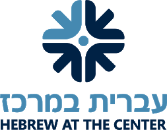STEM Learning in Action
April 27, 2015 by
STEM (Science, Technology, Engineering, Math) education is growing and thriving at JPDS-NC. On the evening of April 2, four JPDS-NC sixth graders attended the Grand Award Ceremony of DC STEM Fair 2015 at the Smithsonian National Museum of Natural History. Esther Feron, Sami Himmelfarb, Noa Schleifer and Beri Gershwind swept the Junior Division with 1st, 2nd, 3rd and 4th place wins for individual projects in the categories of Physics and Astronomy, Microbiology, and Engineering. They competed in the Junior Division, which is designated for students in grades 6 to 8, and each school was only allowed to send up to five projects from their school fairs. DC STEM Fair is the signature science event for all public and independent schools in the nation’s capital. Congratulations to the students and to Senior Science Specialist Elana Cohen on this achievement! To learn more about their projects, please read below or click here to read the Washington Jewish Week article.
Days before the STEM Fair ceremony, fifth grade students in Ms. Schopf’s math class created a math carnival that offered fun challenges in math to their fellow fifth graders while reinforcing and extending their own learning of a wide range of math subjects. On the South Campus, kindergartners in Lisa Davis’s class have been studying space exploration all year; as part of their learning, they are communicating with science bloggers and even got to ask questions of the astronauts on the international space station live on the radio.
On April 19, we had the culminating event of the Cardboard Box Challenge. Spear-headed by science teacher Alexandra Taylor, the months-long family program engaged children and parents to use their imagination, ingenuity and problem-solving skills and build working arcade games out of recycled materials. These are just some of the recent highlights in STEM learning at JPDS-NC, in addition to the amazing work in the classrooms and with subject specialists currently happening at the Sadnah (atelier) and our Science Lab.
Looking ahead, we are planning for the official opening of the Design Lab in its new location in fall 2015. We are also in the research and planning stages for the implementation of Design Thinking across the school as an integral part of our classroom curricula. Our STEM curriculum fits beautifully within the philosophy of education that guides our entire program. Whether our students are designing experiments, solving problems, or encountering ancient or modern texts, they face the challenges, opportunities, and responsibilities of thinking critically and thinking independently.
DC STEM Fair 2015 – About the Projects
Esther Feron presented an individual project entitled The Science of Toy Cars in the Physics and Astronomy category. Her project tested whether adding weight to a toy car would affect how far it traveled off a ramp. She designed her experiment with an eye towards understanding the real life applications of physics concepts, such as its applicability to a handicapped ramp.
Sami Himmelfarb presented an individual project on Temperature and Bacterial Growth in the Microbiology category. Her project tested the effect of different temperatures on bacterial growth. She experimented with a bacteria that is commonly found on keyboards (Staphylococcus Aureus) and proved that it would grow best at room temperature, important information to think about as it relates to hand-washing and keeping keyboards clean.
Noa Schleifer presented an individual project entitled The Power of Garlic in the Microbiology category. Her experiment compared how well garlic killed bacteria, as compared to hand sanitizer. She found the garlic was more effective than the hand sanitizer in her experiment.
Beri Gershwind presented an individual project called Bridge Break Experiment in the Engineering category. He tested for the best materials to build a bridge, studying how the density of materials would affect the strength of the bridge. He built the same bridge with printer paper, construction paper, cardstock, and cardboard, and learned that while density and strength are correlated, there are other variables that are important to consider when designing a bridge.






